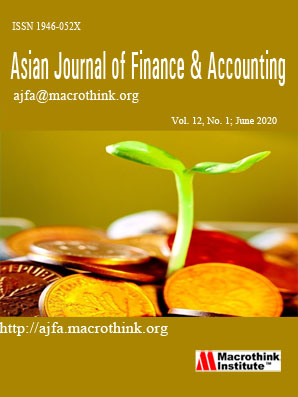Business Valuation: Modelling Forecasting Hurdle Rate
Abstract
Consolidation, Combination and Diversification (CCD’s) in the emerging globalized market leads to competition and escalating the monopoly power. Given the increasing liberalization of rules, regulations and law, a number of firms are going beyond national borders and making successive deals. We suggest an innovative model for firm valuation for M&A in the area Corporate Finance, NRR Approach 1.0. The methodology is divided into five phases, modeling forecasting hurdle rate, finding sales growth rate, computation of free cash flows & estimation of future free cash flows and finally determination of firm value under NRR approach. The findings suggest that, NRR approach considers various imperative factors for valuation of target firms in estimating cash flows for the benefit of shareholders. The NRR approach is the first version of development thought and it is not suggested to validate in other industries, until matching the requirements of the model. We believe that NRR model shall be of great help to M&A advisory firms and investment bankers while negotiating deal value in acquisition process. This will help in exploring new dimensions of judgment and approach for academia as well as for the benefit of target firm shareholders in corporate arena. The motive behind the study is to innovate new financing models in upcoming area of mergers and acquisition advisory. The value of study is credited by NRR Approach 1.0. and this is the first of its kind model that considers political, transfer and commercial risk factors while estimating hurdle rate.
Keywords: Mergers, acquisitions, hotel & tourism, forecasting, business valuation
Submission of an article implies that the work described has not been published previously (except in the form of an abstract or as part of a published lecture or academic thesis), that it is not under consideration for publication elsewhere, that its publication is approved by all authors and tacitly or explicitly by the responsible authorities where the work was carried out, and that, if accepted, will not be published elsewhere in the same form, in English or in any other language, without the written consent of the Publisher. The Editors reserve the right to edit or otherwise alter all contributions, but authors will receive proofs for approval before publication.
Copyrights for articles published in MTI journals are retained by the authors, with first publication rights granted to the journal. The journal/publisher is not responsible for subsequent uses of the work. It is the author's responsibility to bring an infringement action if so desired by the author.








